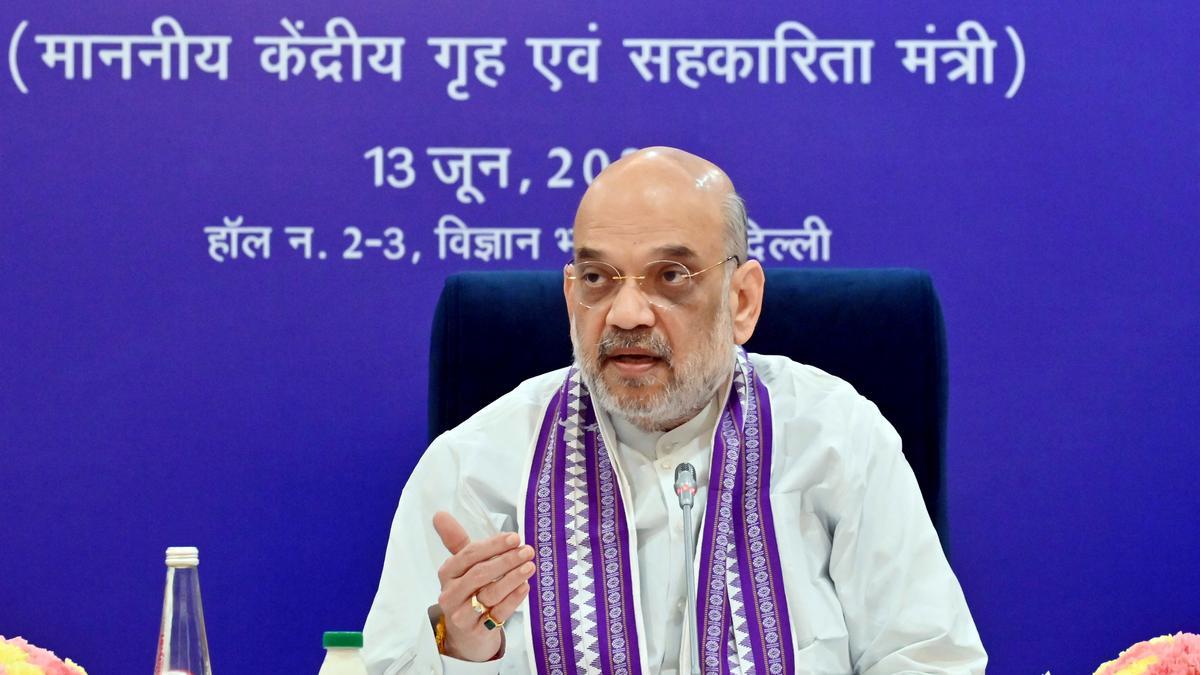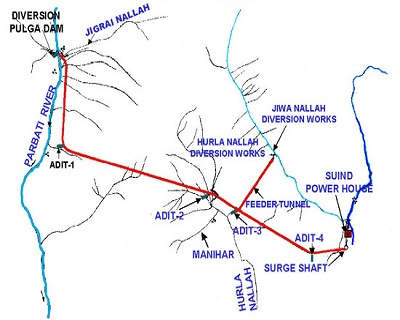Description

Disclaimer: Copyright infringement not intended.
Context: The actions and initiatives taken by Union Home Minister Amit Shah regarding disaster management in India.
Details
Disaster Management Plan for Nuclear Installations:
- Union Home Minister Amit Shah requested states to prepare a disaster management plan for areas where seven new nuclear installations are becoming operational.
- States were advised to collaborate with the National Disaster Management Authority (NDMA) in creating the roadmap.
- NDMA conducted visits to the seven power plant sites and issued strict protocols to the states for emergency rescues.
Schemes for Disaster Management:
- Amit Shah announced three major schemes worth over ₹8000 crore for disaster management.
- A ₹5,000-crore project was allocated to expand and modernize fire services in states.
- A ₹2,500-crore project was proposed for reducing urban flooding risk in the seven most populous metros.
- A ₹825-crore National Landslide Risk Mitigation Scheme was planned in 17 states and union territories.
Hot Weather Conditions:
- Workshops were conducted in 23 states to address hot weather conditions.
- Some states suggested providing compensation to farmers, which the government will consider.
- States were encouraged to increase their budgetary provision for hot weather conditions.
Model Fire Bill and District Disaster Management Plans:
- States were urged to adopt the Model Fire Bill, aiming for a uniform law across all states.
- Preparation of District Disaster Management Plans in 87 districts across 8 states is pending and should be completed promptly.
State-Level Action Plans:
- State-level action plans for thunderstorms and lightning have been shared by the Centre, but over 25 states and union territories have not yet provided their plans.
- Similarly, 16 states and union territories are yet to prepare action plans for cold wave and fog.
- The Incident Response System has been implemented in 20 states, but 16 states are yet to implement it.
Flood Management and Early Warnings:
- ISRO has identified 271 wetlands in the Northeast for flood management.
- The India Meteorological Department (IMD) now issues a 5-day advance forecast for rainfall and floods, providing extra time for rescue efforts.
- Instructions have been given to issue a 7-day advance forecast by next year.
- The Ministry of Environment, Forests, and Climate Change has undertaken flood control measures by planting saplings on the banks of 13 major rivers prone to floods.

About Nuclear Disasters and Safety
Nuclear disasters refer to catastrophic events that occur at nuclear power plants or facilities involving the release of dangerous levels of radioactive materials.
Causes:
- Natural disasters such as earthquakes, tsunamis, and severe weather conditions.
- Equipment failure or malfunction.
- Human error, including operational mistakes or inadequate safety protocols.
- Sabotage or terrorist activities.
Examples of Nuclear Disasters:
- Chernobyl disaster (1986): The explosion and fire at the Chernobyl Nuclear Power Plant in Ukraine resulted in a significant release of radioactive materials, causing immediate deaths and long-term health effects.
- Fukushima disaster (2011): The nuclear accident following a massive earthquake and tsunami in Japan led to multiple reactor meltdowns, releasing radioactive materials and causing widespread evacuations.
Nuclear Safety Measures:
- Safety Regulations and Standards: Governments and regulatory bodies establish comprehensive safety regulations and standards that nuclear power plants must adhere to. These regulations cover various aspects, such as design and construction, operational procedures, emergency preparedness, and waste management. Regular inspections and assessments are conducted to ensure compliance with safety regulations and identify any potential risks or issues.
- Design and Engineering: Stringent safety measures are incorporated into the design and engineering of nuclear power plants to prevent accidents. Multiple safety systems, redundant components, and containment structures are employed to mitigate risks.
- Emergency Preparedness and Response: Nuclear power plants have emergency response plans in place to address potential accidents or incidents. These plans include procedures for evacuations, sheltering, monitoring radiation levels, and providing medical assistance to affected individuals. Training and drills are conducted regularly to ensure that plant personnel and local authorities are well-prepared to respond effectively in case of an emergency.
- Risk Assessment and Management: Extensive risk assessments are carried out during the design, construction, and operation of nuclear power plants to identify and mitigate potential hazards. Risk management strategies involve analyzing the likelihood and consequences of accidents, implementing safety measures to reduce risks, and continuously monitoring and updating safety protocols.
- International Cooperation and Information Sharing: Countries with nuclear power programs collaborate internationally to share knowledge, experiences, and best practices regarding nuclear safety. Organizations such as the International Atomic Energy Agency (IAEA) facilitate cooperation, provide technical assistance, and establish guidelines for nuclear safety.
- Public Awareness and Education: Governments and nuclear power operators engage in public awareness campaigns to educate the public about nuclear energy, its safety measures, and the potential risks. Efforts are made to ensure transparency, provide accurate information, and address public concerns regarding nuclear power and its safety.
|
PRACTICE QUESTION
Q) Which organization is responsible for overseeing nuclear disasters in India?
A) Nuclear Power Corporation of India Limited (NPCIL)
B) Atomic Energy Regulatory Board (AERB)
C) Department of Atomic Energy (DAE)
D) Indian Nuclear Emergency Management Committee (INEMC)
Ans: B
|
https://www.thehindu.com/news/national/home-minister-amit-shah-asks-states-to-prepare-disaster-management-plans/article66963883.ece
















